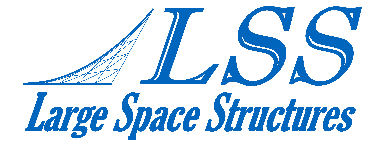-
StatusCompleted
-
Status date2018-01-22
-
Activity Code1B.075
The study has identified two reference antenna configurations based on the use of Large Deployable Reflectors. These two configurations envelope most of the current and next future planned missions. One antenna operates in medium-low frequencies (say S band) and the other in high frequencies (say Ka band).
The first configuration foresees the use of one antenna per spacecraft of about 12 meters projected aperture diameter while the other foresees the use of up to four antennas on a single spacecraft of about 5 meters projected aperture diameter.
For each configuration the study has deeply investigated the Antenna performances, the Large Deployable Reflector architecture, the implications of the satellite accommodation and hence the requirements to be considered for the future development of Large Deployable Reflectors in Europe. Finally the study has described the development roadmap and its associated ROM cost.
For each configuration the study has deeply investigated the Antenna performances, the Large Deployable Reflector architecture, the implications of the satellite accommodation and hence the requirements to be considered for the future development of Large Deployable Reflectors in Europe. Finally the study has described the development roadmap and its associated ROM cost.
The optimization of the RF performances required the use of optics geometry which was conflicting with the accommodation on the spacecraft inclusive of the interfering with areas of high energy thruster plumes from the spacecraft attitude control. Several iterations finally solved the topic. Another challenge was the compromise among stiffness in deployed configuration of the Reflector assembly and mass. Also in this case several iterations finally solved the topic.
The study has identified the products required by the next future European market, their requirements and the roadmap for their development and finally the associated ROM cost.
This study can be used as guideline for future research on Large Deployable Reflector Antenna Systems.
A new architecture of Large Deployable Reflector has been identified. Its interface with foldable arm, launch lock system has been identified, the need of special deployment mechanisms have been identified as well as the need of reflector pointing mechanism for specific applications.
To say that the study has identified all the key building blocks required for the next missions. Some are already at TRL 5, but other require intense developments.
The Reflector dish architecture is based on the concept of double shifted pantograph invented and patented by LSS GmbH, Germany.

Both the 12 m and the 5 m Large Deployable Reflectors include a two segments arm with three deployment rotary actuators inclusive of locking system at the end of deployment. In case of the 5 m Ka band mission the last actuator is a biaxial pointing system to be used associated to an RF sensing system for active pointing control.
The development roadmap has identified that in a period of about 3 years could be possible to bring the European Large Deployable Reflectors to a TRL 8 if the funding is available.
The study is complete and all deliverables have been provided.





